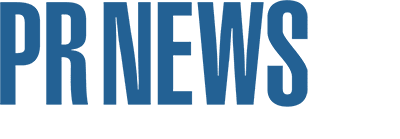
Imagine a company launching a new corporate wellness initiative. On Monday, the team posts a video about a new corporate mindfulness program. On Tuesday, they publish a blog on the science behind stress reduction. By Wednesday, they’re promoting an employee fitness challenge. By the end of the week, they’ve shared customer testimonials, infographics and press releases—all about different aspects of their wellness efforts.
While each storyline may be compelling on its own, do they all weave together into a consistent narrative that tells a broader corporate story?
Too Many Messages
This is the challenge many brands face today. In an effort to stay relevant and produce fresh content, a company's communication team can tell 1,000 different stories in 1,000 different ways. Audiences may acknowledge the actions taken and even the results, but in the absence of a unifying theme, they may struggle to understand what the brand truly stands for, and messaging becomes lost. Instead of reinforcing a central idea, the audience is forced to sort through disconnected information and vignettes. This makes it harder to build trust and recognition.
With social media and short news cycles, brands feel the need to churn out fresh stories to maintain engagement. As a result, communicators tend to focus on content volume over impact, creating a flood of disconnected narratives that fail to leave a lasting impression. The pressure to produce content is even greater when there are multiple internal stakeholders and products, all with a good story to tell.
Brands serve different stakeholders, including customers, investors, employees and partners, who may have distinct interests and concerns. Instead of developing a core story that can be adapted for different audience segments, too often communicators create completely different narratives for different stakeholders, weakening the resonance and impact of the core theme and creating confusion.
A Holistic Content Strategy
Now, imagine a different approach. A wellness brand launches an initiative focused on holistic well-being through movement. Instead of telling scattered, disconnected stories, they align every piece of content under one central theme: “Movement for a Healthier Life.” An example content plan could include:
- Monday: A high-impact video featuring the CEO discussing the importance of movement in daily life.
- Tuesday: A blog post on the benefits of micro-movements throughout the workday to reduce stress.
- Wednesday: A behind-the-scenes Instagram Story showcasing employees participating in a new company-wide stretch break initiative.
- Thursday: A LinkedIn article by the Chief Wellness Officer explaining the science behind movement and mental health.
- Friday: A press release highlighting the company’s partnership with fitness professionals to promote movement-based wellness solutions.
Instead of overwhelming audiences with unrelated stories, this approach delivers one powerful message across all channels. Each tactic builds on the last, ensuring that whether a customer, investor, employee or journalist engages with the content, they understand and connect with the same core story. This core theme is reflected across all actions and programs, using language that is consistent across multiple platforms.
The result? A strong, cohesive wellness story that sticks, resonates and ultimately fosters a deeper connection with the brand.
The Power of One
A clear, focused story can strengthen brand identity and loyalty. A single, powerful narrative ensures that every communication builds on a unified purpose, helping audiences immediately recognize and associate key themes with the brand. The story can be repurposed across multiple formats, turning speeches into blogs, social media posts, videos and podcast discussions while keeping the core message intact. Teams should convene so all marketing and communication tactics align with that one story and reinforce the core narrative.
Beyond branding, this approach also makes practical sense. Trying to tell 1,000 fragmented stories requires endless time, effort and budget. Digital tools and platform schedulers now allow for easier content development and distribution. By focusing on telling one powerful story in 1,000 ways, organizations can optimize their resources, streamline efforts and achieve greater impact without constantly starting from scratch.
Meghan Tisinger is Managing Director of Leidar USA, a global crisis and strategic communications firm.
